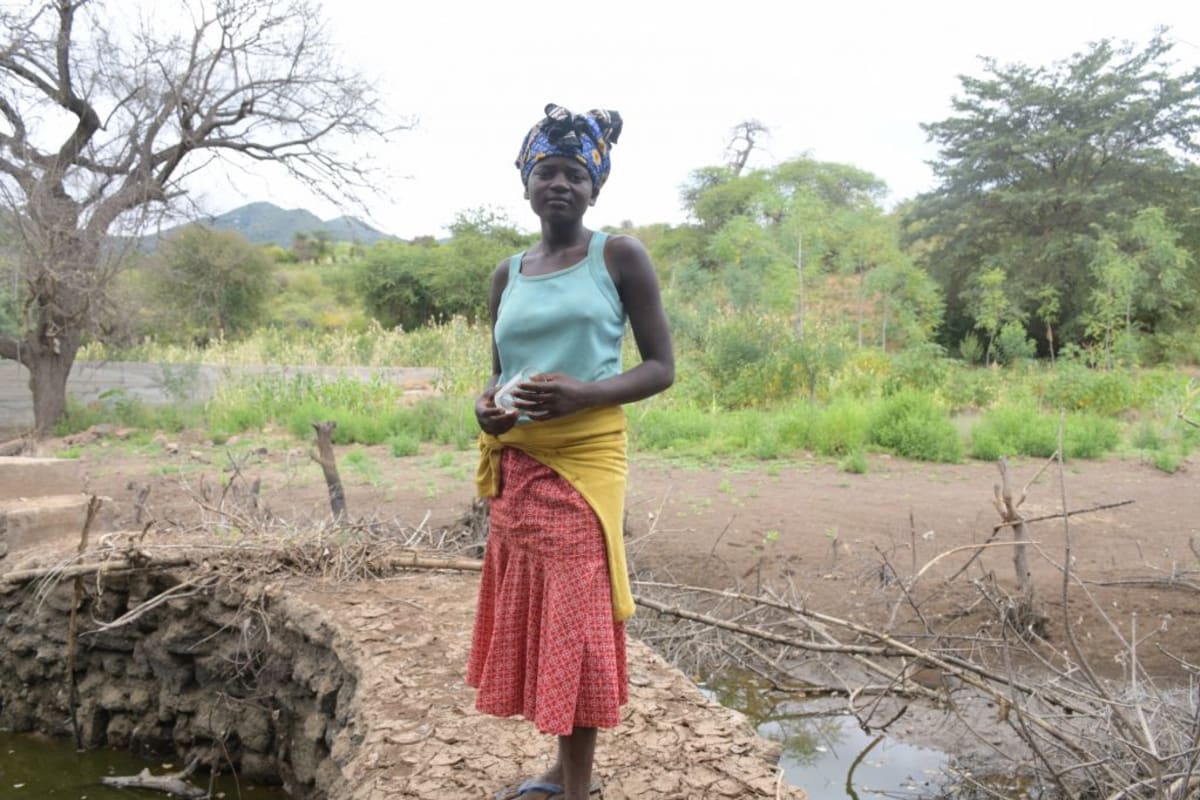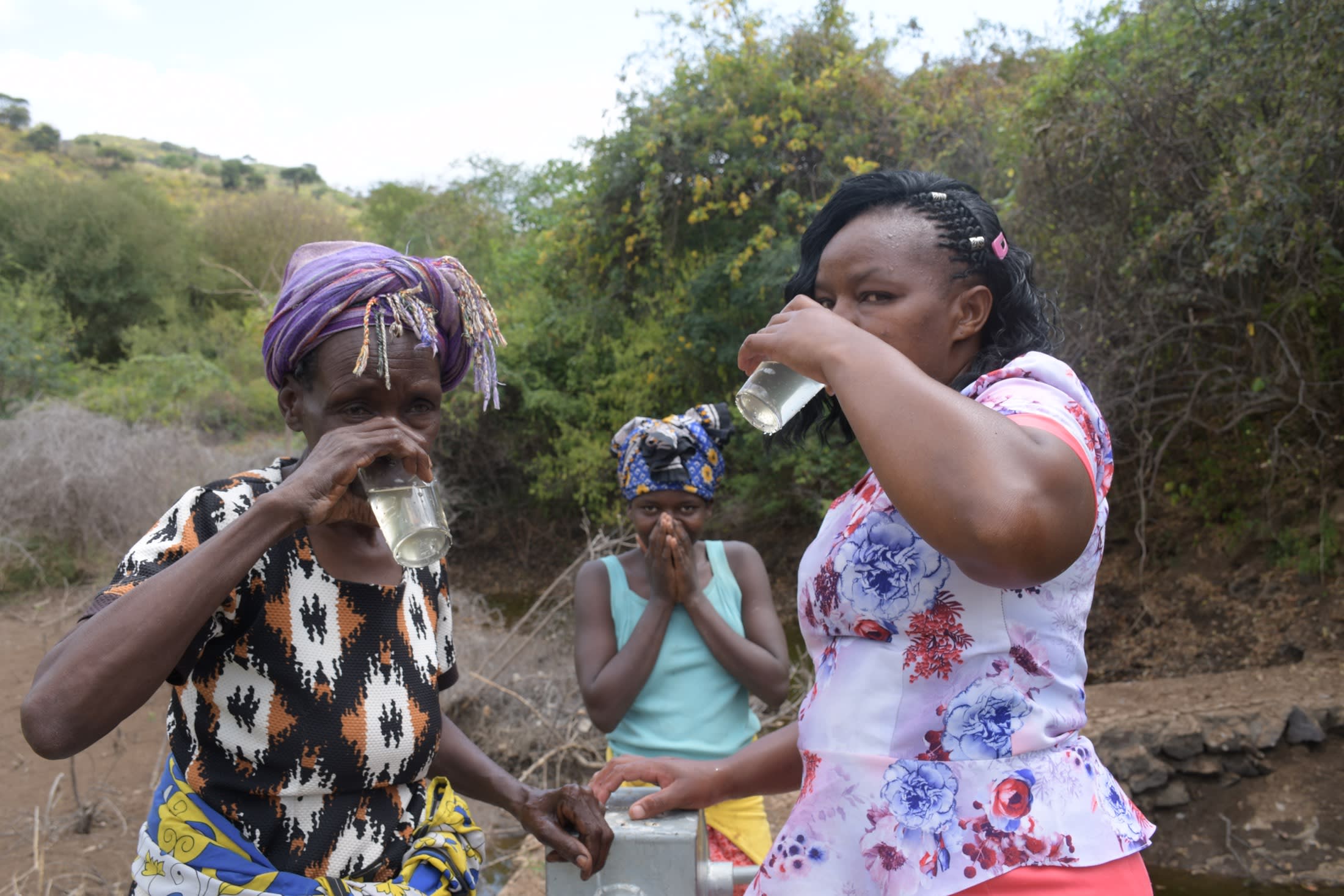The majority of the 1,200 community members in this locality rely on a single water source for all their water needs - a dam and well project that we completed last year. Many community members still walk a long distance to access the water point, making the daily chore of water fetching exhausting.
"Having adequate water in our community has been a big challenge for a long time. I am required to travel for more than one hour to the water source. It is tedious and time-consuming since I am required to make several trips there to get enough water for the family's needs. More water projects evenly distributed can help all of us have easy access to water within our homesteads," shared Mwanziu Ruendo, a farmer in the community.
Our main entry point into Kasioni Community has been the Kamami Self-Help Group, which is comprised of households that are working together to address water and food scarcity in their region. These members will be our hands and feet in constructing water projects and spreading the message of good hygiene and sanitation to everyone. This region of Kenya is semi-arid, which means that rains are infrequent, and people often travel long distances for water.
We work with self-help groups like this one for up to five years to build multiple water points in seasonal riverbeds to ensure everyone has access to a reliable water point close to home. The implementation of more water projects in the locality can help address the challenges of distance and overcrowding.
"During the dry season of the year, our water source is always full with many people drawing water here, even from other villages, which shows the need for more water projects in our community since the available ones are not enough. More water projects would reduce the dependency on the available main source of water," explained Musya Mutemi.
Kasioni village is a quiet rural location with average vegetation cover made of predominantly indigenous tree species. A majority of community members have houses made of brick walls and iron sheet roofs. The roads in the locality are dry weather roads penetrating the steep slopes leading to the community.
On an average day, the women and children wake up at 6:00 am. The women will prepare breakfast for the family as the children get ready for school. The responsibility for fetching water each day falls on the women who must go out with containers carried either by a donkey or on their backs. Depending on the size of the family and their water needs, many women and children may be required to travel back to the water source multiple times to get water for their use at home.
Reliable Water for Kasioni
Hand-Dug Well
This particular hand-dug well will be built adjacent to a sand dam project, which will supply clean drinking water once it rains. We have supplied the group with the tools needed for excavation. With the guidance of our artisans and mechanics, the excavated well will be cased, sealed with a well pad, and then finished with a new AfriDev pump.
Excavation takes a month or more on average, depending on the nature of the rock beneath. Construction of the well lining and installation of the pump takes 12 days maximum. The well will be lined with a concrete wall including perforations so that once it rains, water will filter in from the sand dam.
This well will bring clean water closer to families.
New Knowledge
These community members currently do their best to practice good hygiene and sanitation, but their severe lack of water has been a big hindrance to reaching their fullest potential.
We will hold hygiene and sanitation training sessions with the Self-Help Group and other community members to teach about important hygiene practices and daily habits to establish at the personal, household, and community level. This training will help to ensure that participants have the knowledge they need to make the most out of their new water point as soon as water is flowing.
One of the most important topics we plan to cover is the handling, storage, and treatment of water. Having a clean water source will be extremely helpful, but it is useless if water gets contaminated by the time it is consumed. We will also emphasize the importance of handwashing.
We and the community strongly believe that all of these components will work together to improve living standards here, which will help to unlock the potential for these community members to live better, healthier lives.
We typically work with self-help groups for three to five years on multiple water projects. We will conduct follow-up visits and refresher trainings during this period and remain in contact with the group after all of the projects are completed to support their efforts to improve sanitation and hygiene.

 Protected Dug Well
Protected Dug Well
 Rehabilitation Project
Rehabilitation Project

































